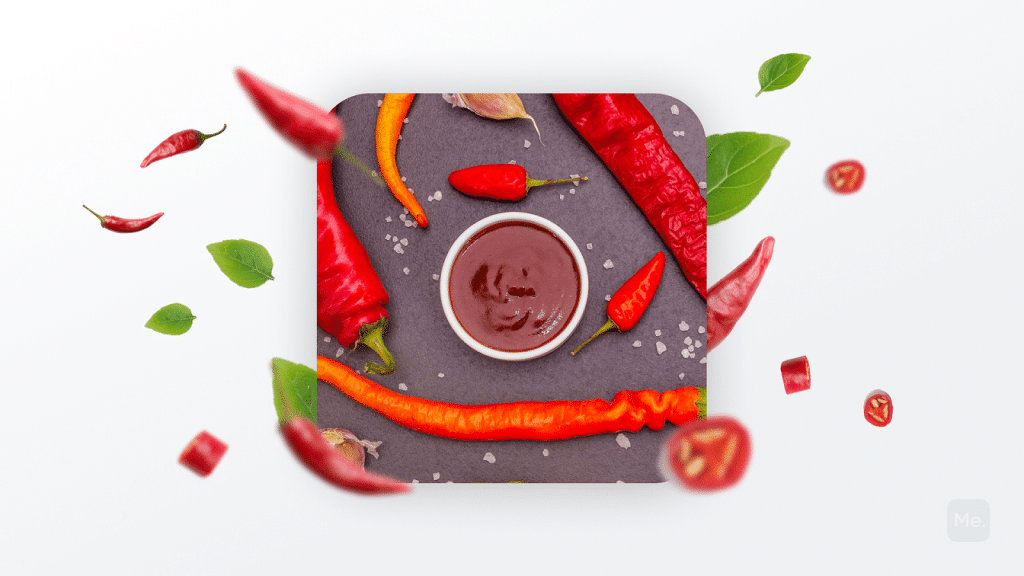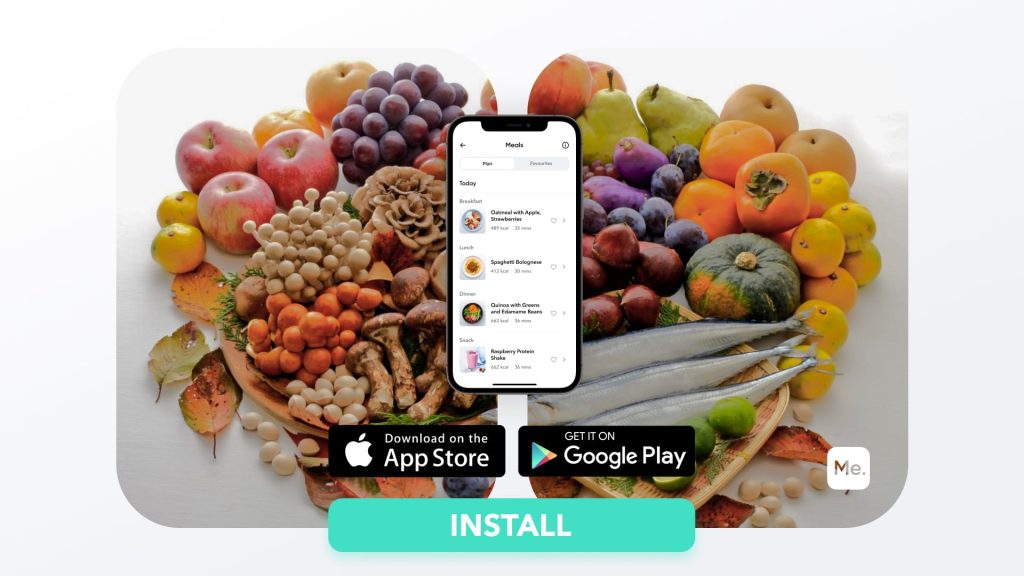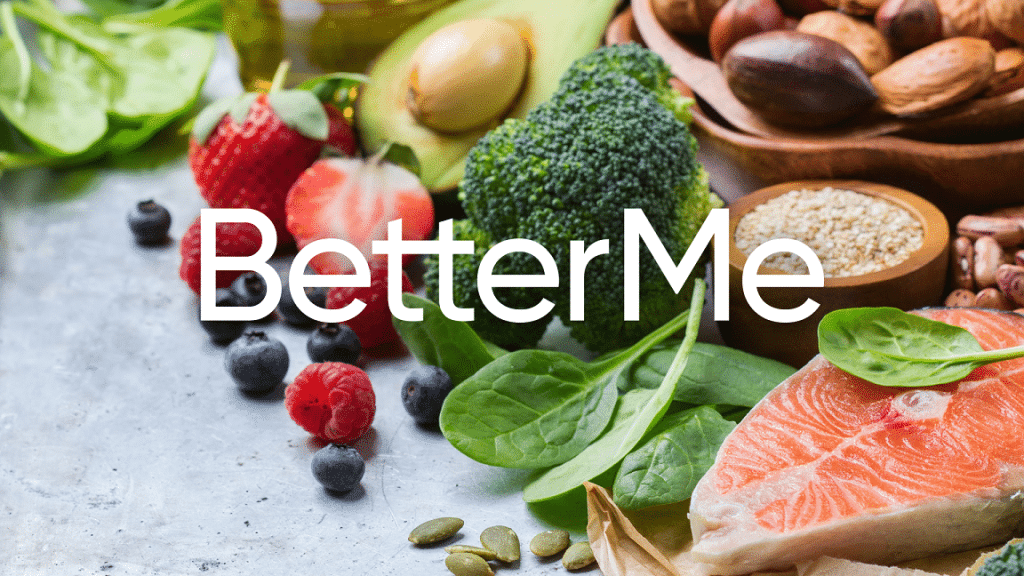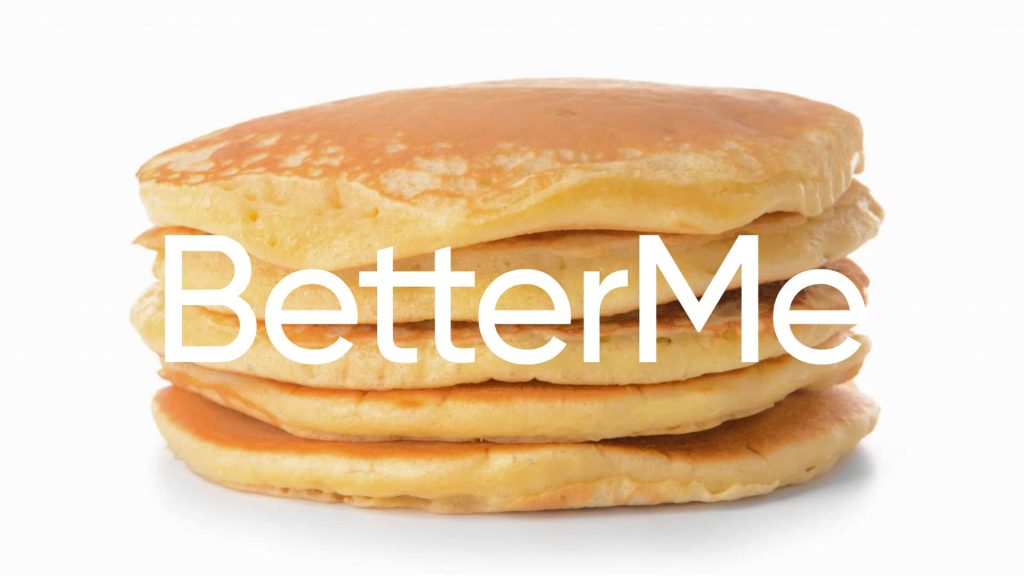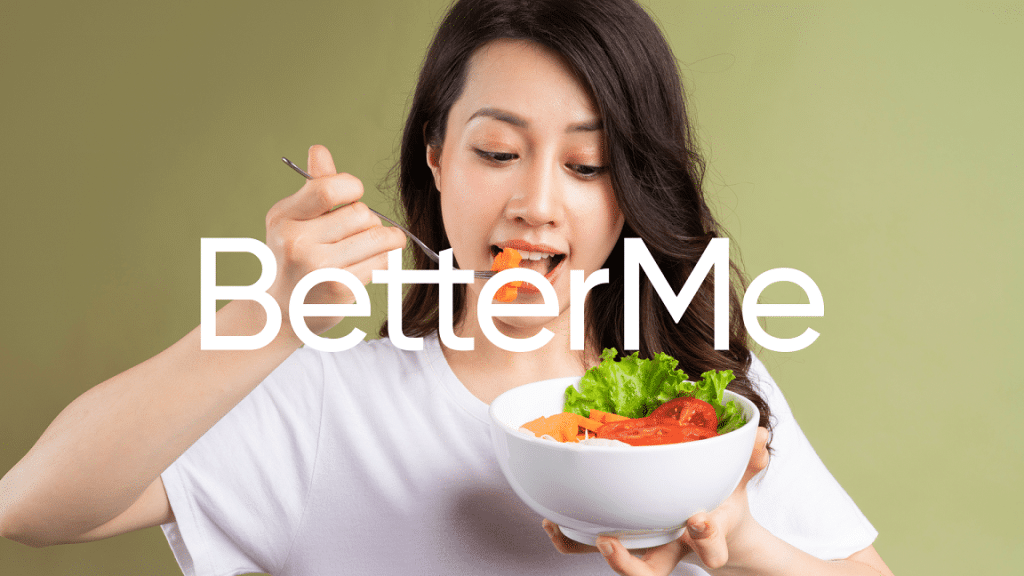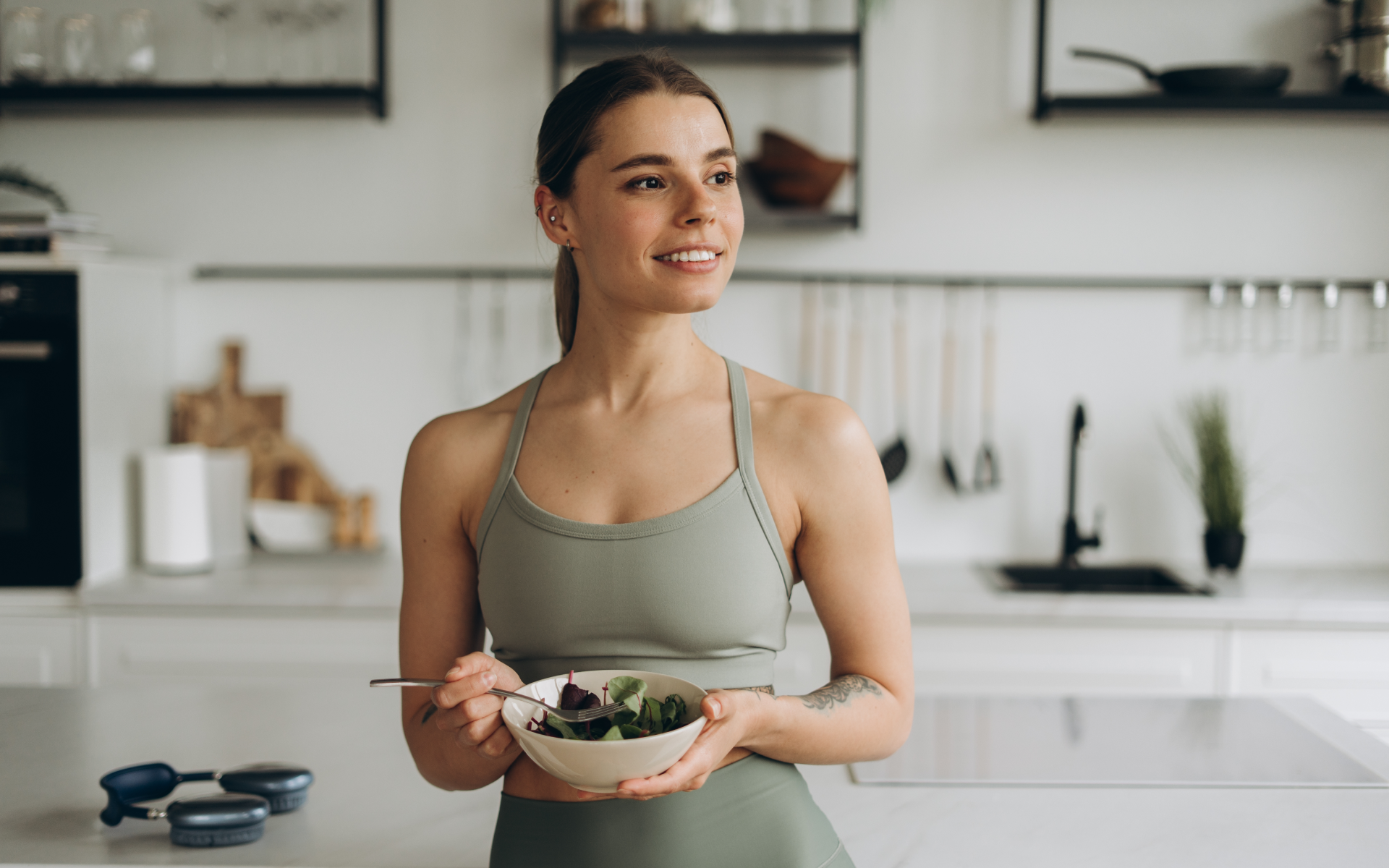Why Korean Weight Loss?
One thing that jumps out about Koreans is the fact that most of them are extremely skinny. The statistics show that Korea has one of the lowest overweight (16) and obesity (15) rates in the world. So, you may wonder how do they manage their weight? The answer to that question lies in their diet and habits. As the popularity of Korean culture is growing more and more nowadays, a lot of people start taking interest in Korean weight loss. In this article, you will learn about the specifics of a Korean weight loss diet and also dive into its rules, benefits, and downsides.
Korean Weight Loss Diet Basics
The Korean weight loss diet is based on the traditional Korean cuisine, which consists mainly of whole, minimally processed foods, rich in healthy macronutrients, vitamins and minerals. It also limits the consumption of sugary, fatty, and processed foods. The Korean weight loss diet claims to not only help you slim down and maintain your target weight by changing your eating and exercise habits, but also improve the state of your skin and your overall health and wellness. The meals of this nutritional plan include rice, meat, fish, seafood, and vegetables, in particular kimchi.
Kimchi is a fermented vegetable, often cabbage or radish, which is very popular in Korea and plays a prominent role in their diet. In general, the diet is thought to be pretty flexible and sustainable, allowing you to choose which Korean foods you like the most, and adjust your nutritional plan to your taste. In order to maximize the effectiveness of this dietary plan you need to stick to the following rules:
Read More: Asian Weight Loss: Can It Help You Shrink Back Into Shape?
-
Decrease Your Caloric Intake
There are no strict rules about the number of consumed calories or sizes of your portions, however, an authentic Korean diet calls for smaller portions and fewer calories than a typical “Western” eating pattern.
-
Avoid Added Sugars
The Korean weight loss diet encourages to replace all sugary drinks such as soda, store juices, etc. with water. You should also eat fresh fruits instead of sweets, candies, cookies, baked goods, and desserts.
-
Cut Back On Fats
Try to consume less greasy foods, sauces, oils, and seasonings. Eating out is also not encouraged.
-
Eat Less Snacks
Snacks also should be avoided, as they are considered unnecessary and only increase the caloric intake.
If you wish to free yourself from all the extra pounds that have been weighting you down for way too long, start using the BetterMe app and overhaul your entire life!
What To Eat?
The Korean weight loss diet is quite flexible and well-balanced. It allows a great variety of nutrient-rich foods, such as:
-
Fruits
This nutritional plan allows all types of fruits. They are filled to the brim with essential vitamins, minerals, fiber, and water, and make a great natural substitute for sweets.
-
Vegetables
Like fruits, you can consume any type of vegetables while following the Korean weight loss diet. You can eat them with soups or other cooked dishes. They can be either raw or fermented.
-
Rice
This diet includes a lot of dishes that contain rice. Koreans usually use rice as a base-dish, instead of bread, or in a form of rice noodles, instead of pasta and macaroni.
-
Animal Proteins
Protein-rich animal products, such as eggs, meat, seafood, and fish play an important role in this diet, and are usually consumed in small portions, but with the most meals.
-
Plant Proteins
Suitable for vegetarian or vegan diets, such foods as tofu, dried shiitake, and king oyster mushrooms are filled with protein and may be used as substitutes for meat in Korean weight loss diet recipes.
-
Wheat-Free Grains
Rice is not your only option on this diet. You can also eat products made from mung bean, potato, and tapioca starch, such as dumplings, pancakes, glass noodles, and others.
What To Avoid?
Being as flexible as it is, the Korean weight loss diet still has certain restrictions. Some of the foods that should be avoided were already mentioned before. Now, it doesn’t completely ban the consumption of those foods, rather encourages to limit their intake. But it does emphasize the need to avoid snacks. So, here are all the foods that should be cut while following this dietary plan:
-
Wheat Products
This nutrition plan encourages to minimize the consumption of foods and products that contain wheat, including bread, pastries, pasta, breakfast cereals, and wheat-based flours.
-
Sugary And Processed Foods
As was mentioned above, one of the main rules of this diet states that you should cut the consumption of foods that contain added sugar and processed foods, as they only add empty calories to your meal.
-
Dairy Products
Dairy products are not an option. You should keep away from milk, yogurt, cheese, ice cream, and any foods that may contain dairy.
-
Fatty Foods
Another thing that was previously mentioned – fats. You should steer clear of fatty meats, fried foods, oils, oily seasonings and sauces.
Korean Weight Loss Diet Meal Plan Sample
You can adjust the diet to fit your personal preferences keeping in mind the ground rules that were mentioned previously. Here is a 3-day sample meal plan:
Day 1
- Breakfast: a bowl of bibimbap (rice mixed with vegetables, egg, and meat or tofu)
a cup of cooked rice, 1 egg, 2 oz (57 g) beef, a cup of various vegetables, 2 shiitake mushrooms
Calories: 450 kcal; Carbs: 24 g; Protein: 24 g; Fat: 24 g
- Lunch: a bowl of kimchi jjigae (kimchi stew with onions, tofu, seafood or pork)
a cup of kimchi, 2 oz (57 g) pork, 3oz (85 g) tofu, scallion
Calories: 186 kcal; Carbs: 10 g; Protein: 16 g; Fat: 9 g
- Dinner: two cups of japchae (glass noodle stir-fry)
2 oz (57 g) of sweet potato starch noodles, 2 oz (57 g) of beef, a cup of carrot, baby spinach, and onion, 4 shiitake mushrooms
Calories: 592 kcal; Carbs: 54 g; Protein: 24 g; Fat: 30 g
Total of nutrients per day: Calories: 1,228 kcal; Carbs: 88 g; Protein: 57 g; Fat: 63 g
Read More: Okinawa Diet: Can it be considered a Wellness Cure-All
Day 2
- Breakfast: one omurice (omelet and rice)
1 cup of cooked rice, 2 eggs, a cup of minced vegetables of your choice, 2oz (57 g) of chicken
Calories: 428 kcal; Carbs: 46 g; Protein: 24g; Fat: 16 g
- Lunch: 8 large mandu (meat or vegetable dumplings made with rice and tapioca flour)
8 mandu wrappers, 3 oz (85 g) of minced pork, 2 oz (57 g) of minced beef, a cup of zucchini, half of a cup of green cabbage, half of an onion, 3 shiitake mushrooms
Calories: 556 kcal; Carbs: 49 g; Protein: 32 g; Fat: 25 g
- Dinner: 2 cups of kimchi bokkeumbap (stir-fried rice with kimchi, vegetables and tofu)
A quarter of a cup of kimchi, a piece of bacon, a cup of cooked rice, 1 egg, a cup of enoki mushrooms
Calories: 234 kcal; Carbs: 36 g; Protein: 4 g; Fat: 6 g
Total of nutrients per day: Calories: 1,218 kcal; Carbs: 131 g; Protein: 60 g; Fat: 47 g
Day 3
- Breakfast: 2 large yachaejeon (vegetable pancakes)
4 cups of sliced vegetables of your choice, a cup of all-purpose flour, 1 egg
Calories: 520 kcal; Carbs: 37 g; Protein: 52 g; Fat: 54 g
- Lunch: a large bowl of sundubu-jjigae (soft tofu stew with vegetables)
A cup of soft tofu, half of a cup of enoki mushrooms, 4 shiitake mushrooms, 4 banana prawns, a cup of littleneck clams
Calories: 494 kcal; Carbs: 30 g; Protein: 32 g; Fat: 24 g
- Dinner: one kimbap (rice and seaweed rolls filled with your choice of vegetables, meat, shrimp, or tofu)
1 dried seaweed sheet, 1 cup of cooked rice, half of an egg, 1 small carrot, a handful of spinach, 2 oz (57 g) grilled beef, 1 imitation crab stick, 1 yellow radish pickle
Calories: 245 kcal; Carbs: 56 g; Protein: 4 g; Fat: 6 g
Total of nutrients per day: Calories: 1,259 kcal; Carbs: 123 g; Protein: 88 g; Fat: 84 g
Yanking yourself back in shape has never been so easy with our game-changing fitness app! Start transforming your life with BetterMe!
Benefits Of The Korean Weight Loss
This dietary plan is rich in nutrients and low in unhealthy components, which makes it quite health beneficial. So, take a look at some of them:
-
Effective At Weight Loss
It is only natural that one of the main benefits of the Korean weight loss diet is the weight loss itself. It is quite effective in that matter due to the great amount of consumed vegetables, which are a great source of fiber. This component has proven to promote slimming by a reduced feeling of hunger and a prolonged satiety (6). That is why experts recommend increasing your dietary fiber intake if your goal is to shed pounds (14, 11).
This nutrition plan also encourages you to avoid snacking, high fat foods, added sugars, wheat, and dairy, decreasing the number of consumed calories. Another factor that adds to your weight loss is the reduced portion size. All these aspects make you burn more calories than you consume, which is the staple of any successful weight loss (3).
-
Nutrient-Rich And Sustainable
The diet is quite flexible and nutritionally balanced. It offers a sustainable weight loss in the long run. If you incorporate the Korean weight loss principles into your life, you may be able to enjoy quite a healthy nutritional plan, which bans junk food and is filled with nutrient-rich healthy foods. This diet may also be vegetarian- and vegan-friendly.
-
May Improve Your Skin
This nutritional plan promises to improve your skin by helping you fight acne. Such an effect may occur due to the reduced dairy consumption. Dairy products seem to stimulate the release of insulin and insulin-like growth factors, which may be linked to the formation of acne (7, 12). One meta-analysis showed that people who followed a dairy-rich diet were more predisposed to the occurrence of acne than those who consumed less dairy foods (4). Another systematic review and meta-analysis showed similar results, with a 25% higher likelihood of acne occurrence in young adults who consumed any form of dairy, than in those who followed a dairy-free nutritional plan (5).
-
May Boost Your Overall Health
The Korean weight loss diet promotes healthy eating habits, such as frequent consumption of fruits and vegetables. These two components have proven to be quite effective at boosting your health and protecting against chronic diseases, including type 2 diabetes and cardiovascular diseases (5, 8).
Another health-boosting component of this diet is kimchi. As you may already know, kimchi is a fermented vegetable. Studies suggest that this food may help lower blood sugar, blood pressure and bad cholesterol levels (1, 13). Kimchi is also good for your gut health because it adds to the number of probiotics – beneficial gut bacteria (10). These in turn may help prevent or treat various diseases, such as diarrhea, obesity, irritable bowel syndrome (IBS), atopic dermatitis, and others (17).
Downsides Of The Korean Weight Loss
Despite numerous benefits and its high efficiency at helping you slim down and improve your health, this dietary plan has its downsides, among which are:
-
Lack Of Guidance
Although this diet allows you to choose the dishes that you like the most and stick to them, it doesn’t provide enough guidance on how to make sure that your meals are balanced. For a person who is not that familiar with the nutrition basics and rules, it may be difficult to differentiate a nutrient-rich dish from a nutrient-poor one.
-
Banned Snacking
This nutritional plan forbids snacking, which contradicts studies that suggest that some people lose weight more when they include snacks into their meal plan (2).
Korean Weight Loss Tips
If you are determined to trim a couple of inches Korean-style but don’t like Korean cuisine or love to snack, there are some tips, that will help you shed pounds without sticking to the Korean weight loss diet. So, here are some tips that hold the secret to Korean slimness, which you can turn into habits, and enjoy the result:
-
Eat More Veggies
Each Korean meal is accompanied by various vegetable side dishes. These side dishes (banchan) always include kimchi, whether its cabbage kimchi, various cuts of radish kimchi, marinated spinach, bean sprouts, and others. They are usually served first, so as you are waiting for the main course you get into the banchan. So, by the time the main course arrives, you already feel partially full, eating only a part, or a small bit of the main course.
So, if you want to consume less calories while getting all the nutrients, try starting your meal with veggies. You can eat banchan, such as radish kimchi, cabbage kimchi, cucumber kimchi, pickled bamboo, pickled root vegetables, soy-marinated black beans, and others. However, if you are not a fan of fermented food, you can have some roasted, boiled, or steamed vegetables. Raw vegetables are the best variant, but they are not always available, and not all people like them.
-
Include Seafood And Seaweed Into Your Diet
Fish and seafood are an essential part of any healthy and well-balanced diet, such as the Mediterranean diet for example. But not that many people consider including seaweed into their diet. This food is very popular in Korea and it is an ingredient in a lot of recipes. Marinated seaweed is a common banchan dish, miyeokguk is a seaweed soup, kimbap is made of seaweed rolls with rice and various fillings, and those are just a few variants of the usage of seaweed in Korean cuisine.
The seaweed is chock-full of vitamins and minerals, and may act as a natural seasoning, as it already contains naturally occurring salt. It is also a rich source of fiber, which is good for weight loss, as it promotes healthy digestion and adds to the feeling of satiety. If you don’t like the seaweed itself, you can use it in a powdered form, as a salad dressing or topping for different dishes.
-
Eat More Soups And Stews
Korean cuisine is rich in soups and stews, such as kimchi jjigae (kimchi stew), sundubu-jjigae (soft tofu stew), doenjang jjigae (bean-paste stew), and many others. They contain a small amount of meat, and lots of vegetables, tofu, mushrooms, etc. They often are spicy. Soups and stews are filled with nutrients, while being relatively low in calories. They promote healthy digestion and add to the process of weight loss.
-
Avoid Bread
You may already know that Koreans eat rice instead of bread. Rice, especially brown rice, is a great source of complex carbs, while bread is highly processed, and often contains sugar. However, if you like bread, there is no need to completely give it up. Try to cut back on it, or substitute it with a healthier variant (whole-grain bread). It will boost your feeling of satiety and provide you with all the health benefits of whole grains.
-
Keep Away From Fast Food
Korean cuisine is rich in delicious food that takes not that much time to prepare. That is why you can have a quick but healthy meal without resorting to fast food consumption. Instead of hamburgers and French fries, in Korea, you have kimbap and rice rolls, which are much healthier and extremely easy to prepare. That is why, instead of gorging on a greasy burger, prepare your lunch beforehand and make sure that you keep up with the guidelines of the Korean diet.
-
Walk More
A lot of Koreans don’t drive but walk instead. If their destination is pretty far, they go to the closest subway station or bus stop. Public transport there is well-developed, and most people walk more. You can also follow their example and walk to the public transport stops, or just use a bicycle to get to your place of destination. It will increase the number of burned calories, boost your mood and help you stay fit.
-
Minimize The Consumption Of Processed Foods
Unlike the Western diet, Korean meals rarely include processed foods. Highly processed ingredients are very unhealthy and may lead to a lot of health conditions, such as obesity, cancer, cardiovascular diseases, diabetes, and others. These foods are usually processed with chemical ingredients and end up being low in nutrients but high in calories, sugar, and sodium. Try to avoid processed foods as much as possible, choosing healthy ingredients instead.
-
Drink Unsweetened Tea Instead Of Soda
Soda is a well-known source of “empty calories”, meaning that it increases your caloric intake, without providing you with any essential nutrients. That is why you should try to avoid it. Almost every Korean meal is accompanied by unsweetened cold tea. Barley tea is very common there and there is a good reason for it. This tea offers numerous health benefits, including improved blood circulation, digestion, and sleep. It is also a great source of antioxidants, which boost your immune system. This tea is very low in calories and doesn’t interfere with any diet. If you don’t like barley tea, you can try drinking green or white tea. They are also rich in antioxidants and low in calories and may promote weight loss.
-
Substitute Your Sweets With Fruits
Korean cuisine doesn’t include high-calorie desserts. If you are at a traditional Korean restaurant you will not see any heavy desserts on the menu. One of the popular Korean desserts is a patbingsu – shaved ice with fresh fruits and azuki beans. It is quite healthy and will satisfy your sweet tooth like any other western dessert. You can also expect just fresh fruits as a dessert. So, you should try substituting your regular sweets with fresh fruits, that are not only lower in calories, but also rich in nutrients and fiber. They will suppress your hunger and prolong the feeling of fullness.
Another secret of the Korean weight loss is that they like to have a cup of unsweetened coffee after the meal. It decreases hunger and curbs sugar cravings.
Conclusion
Koreans are quite slim. This is partially the result of their diet and lifestyle. The Korean weight loss includes consumption of a lot of fruits and vegetables, rice and its products, animal proteins, such as meats, eggs, seafood, fish, and others. These foods is what makes this nutritional plan well-balanced and healthy. This diet is flexible and allows you to adjust your meal plan to your taste, choosing the recipes that you like more, over those that are not your thing. The benefits of such weight loss include improved skin, an overall better health, stabilized blood pressure and blood sugar levels etc.
It still has some downsides, but they do not prevail over the benefits. However, if you don’t find this diet appealing, you may simply incorporate some of the Korean weight loss tips into your lifestyle. But make sure that you consult a specialist before following a new nutritional plan or making any adjustments in your current diet.
DISCLAIMER:
This article is intended for general informational purposes only and does not address individual circumstances. It is not a substitute for professional advice or help and should not be relied on to make decisions of any kind. Any action you take upon the information presented in this article is strictly at your own risk and responsibility!
SOURCES:
- Beneficial effects of fresh and fermented kimchi in prediabetic individuals (2013, pubmed.ncbi.nlm.nih.gov)
- Chronologically scheduled snacking with high-protein products within the habitual diet in type-2 diabetes patients leads to a fat mass loss: a longitudinal study (2011, pubmed.ncbi.nlm.nih.gov)
- Counting calories: Get back to weight-loss basics (2020, mayoclinic.org)
- Dairy intake and acne development: A meta-analysis of observational studies (2019, pubmed.ncbi.nlm.nih.gov)
- Dairy Intake and Acne Vulgaris: A Systematic Review and Meta-Analysis of 78,529 Children, Adolescents, and Young Adults (2018, ncbi.nlm.nih.gov)
- Dietary fiber and weight regulation (2001, pubmed.ncbi.nlm.nih.gov)
- Evidence for acne-promoting effects of milk and other insulinotropic dairy products (2011, pubmed.ncbi.nlm.nih.gov)
- Fruit and Vegetable Intake: Benefits and Progress of Nutrition Education Interventions- Narrative Review Article (2015, ncbi.nlm.nih.gov)
- Health Benefits of Fruits and Vegetables (2012, ncbi.nlm.nih.gov)
- Health benefits of kimchi (Korean fermented vegetables) as a probiotic food (2014, pubmed.ncbi.nlm.nih.gov)
- High-Fiber Diets and Weight Loss (2015, webmd.com)
- IGF-1 induces SREBP-1 expression and lipogenesis in SEB-1 sebocytes via activation of the phosphoinositide 3-kinase/Akt pathway (2008, pubmed.ncbi.nlm.nih.gov)
- Kimchi, a fermented vegetable, improves serum lipid profiles in healthy young adults: randomized clinical trial (2013, pubmed.ncbi.nlm.nih.gov)
- Making one change — getting more fiber — can help with weight loss (2015, health.harvard.edu)
- Noncommunicable diseases | Obesity among adults (2017, who.int)
- Noncommunicable diseases | Overweight among adults (2017, who.int)
- Probiotics (2020, ods.od.nih.gov)

